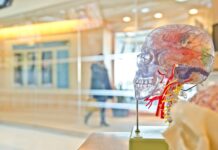Social anxiety isn’t just a fear of public speaking or awkward silences at parties — it’s a powerful condition that actually reshapes the brain.
Also known as social phobia, social anxiety disorder causes overwhelming fear, nervousness, and self-consciousness in everyday social situations. While everyone feels shy or nervous now and then, people with social anxiety often feel paralyzed in social settings. And this doesn’t just affect their social lives — it changes how their brain works.
Let’s dive into the fascinating (and sometimes frustrating) science behind social anxiety — and what researchers have discovered about the brain’s role in this condition.
The Brain on Social Anxiety: What Changes?
Thanks to brain imaging and neurological research, we now know that social anxiety impacts five key areas of the brain. These regions are responsible for emotions, decision-making, perception, and how we interpret other people’s behavior.
1. Amygdala: The Brain’s Fear Center
The amygdala helps us process emotions like fear, anxiety, and aggression. It’s what kicks in your “fight, flight, freeze, or fawn” response when danger strikes. Unsurprisingly, it’s highly active in people with social anxiety.
Studies show that the amygdala of someone with social anxiety is often overactive — especially when they see fearful or angry faces. It’s as if their brain is constantly scanning for danger in social settings.
Interestingly, researchers found that giving socially anxious people oxytocin, a brain chemical that promotes calm and connection, reduces amygdala activity. This suggests that people with social anxiety may have lower natural levels of oxytocin.
Oh, and the amygdala? It tends to be larger in those with more severe social anxiety. That’s a sign the brain is devoting more energy to detecting emotional threats.
2. Prefrontal Cortex (PFC): The Thinking and Planning Hub
The prefrontal cortex is the brain’s decision-maker — responsible for planning, focus, and self-regulation.
But in people with social anxiety, the PFC is often underactive and smaller than usual. That means it doesn’t do a great job calming the overreacting amygdala. Instead of turning down the fear response, it sometimes fuels it.
Even more, socially anxious people tend to hyper-focus on perceived threats — like an angry face — and struggle to shift their attention. Their PFC is working overtime on the wrong things.
3. Anterior Cingulate Cortex (ACC): The Social Stress Monitor
The ACC helps regulate emotions and is heavily involved in how we handle social rejection or disapproval.
For people with social anxiety, the ACC lights up when they see negative facial expressions. It’s a neurological sign of their heightened sensitivity to what others think of them.
Normally, the ACC helps the PFC and amygdala communicate. But in socially anxious individuals, this communication is disrupted — making it harder to calm emotional overreactions.
4. Fusiform Gyrus: The Face Decoder
This area helps us recognize and interpret facial expressions — a key part of social interaction.
People with social anxiety may either avoid eye contact entirely, leading to underactivity in this region, or hyper-focus on faces, causing it to become overactive. In some cases, they even misinterpret neutral faces as angry or threatening — which only increases their anxiety.
5. Hippocampus: The Memory Bank
The hippocampus is essential for memory and learning. It helps us recognize faces and determine whether something is safe or familiar.
But for those with social anxiety, it’s constantly on alert. Even when shown the same face repeatedly, their brain still sees it as unfamiliar — or even threatening. That explains why meeting new people can feel so uncomfortable and stressful for them.
What Happens to the Body During Social Anxiety?
The effects of social anxiety aren’t just in your head — they show up in your body too. When anxiety hits, you may experience:
- Blushing
- Sweating
- Fast heart rate
- Muscle tension or stiffness
- Nausea or stomach pain
- Trouble breathing
Stress hormones like cortisol and adrenaline flood your system, making everything feel more intense and harder to manage.
What Causes Social Anxiety?
The root cause of social anxiety isn’t completely understood, but it’s likely a combination of genetics, brain chemistry, and life experiences.
Some people may inherit a tendency toward anxiety, while others develop it from overly controlling or critical parenting, bullying, or trauma. Studies show that children raised in overprotective or intrusive environments are more likely to develop social anxiety.
Hope for Healing: Treatments That Work
The good news? Social anxiety is very treatable, and understanding how it affects the brain has opened the door to powerful therapies.
💬 Cognitive Behavioral Therapy (CBT)
CBT is a proven treatment that helps rewire negative thought patterns and build social confidence. It can literally change how the brain reacts to criticism or social situations.
💊 Medications
Medications like SSRIs (selective serotonin reuptake inhibitors) and benzodiazepines can reduce anxiety and help people feel more balanced — especially when paired with therapy.
🤝 Support Groups
Connecting with others who share similar challenges, whether online or in person, can reduce feelings of isolation and provide practical strategies for coping.
Final Thoughts
Social anxiety doesn’t just affect how you feel — it changes how your brain interprets the world. But these changes don’t have to be permanent.
With the right support, therapy, and sometimes medication, you can retrain your brain and reclaim your life. Whether it’s learning to challenge negative thoughts or building confidence in social situations, recovery is possible — and you’re not alone on the journey.





















![w780[1]](https://www.my360life.com/wp-content/uploads/2025/06/w7801-696x483.png)








